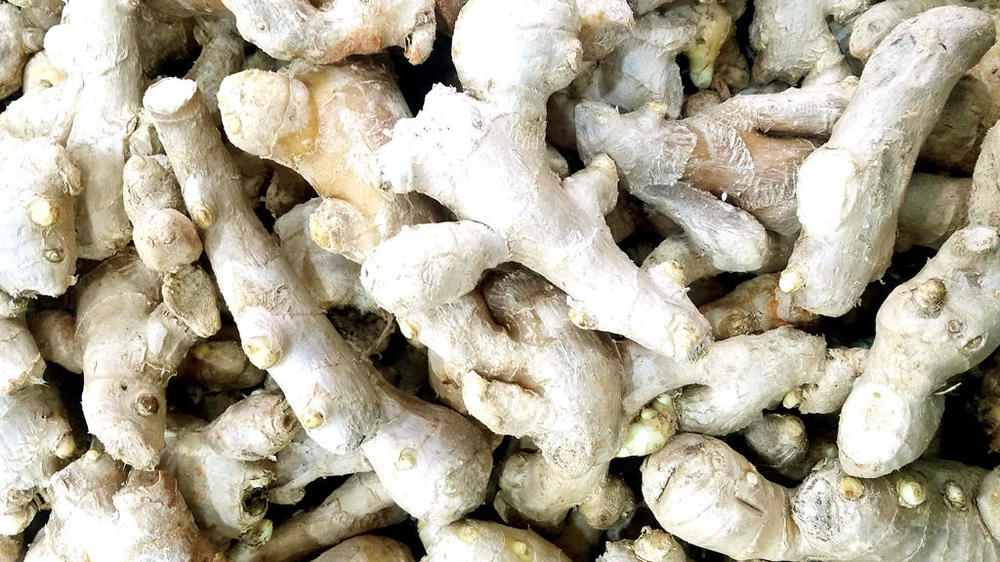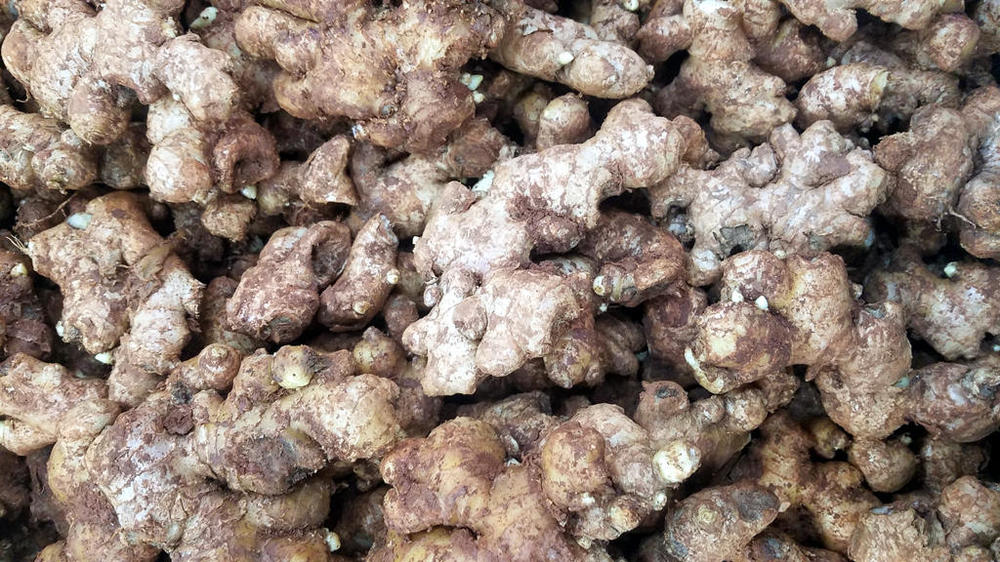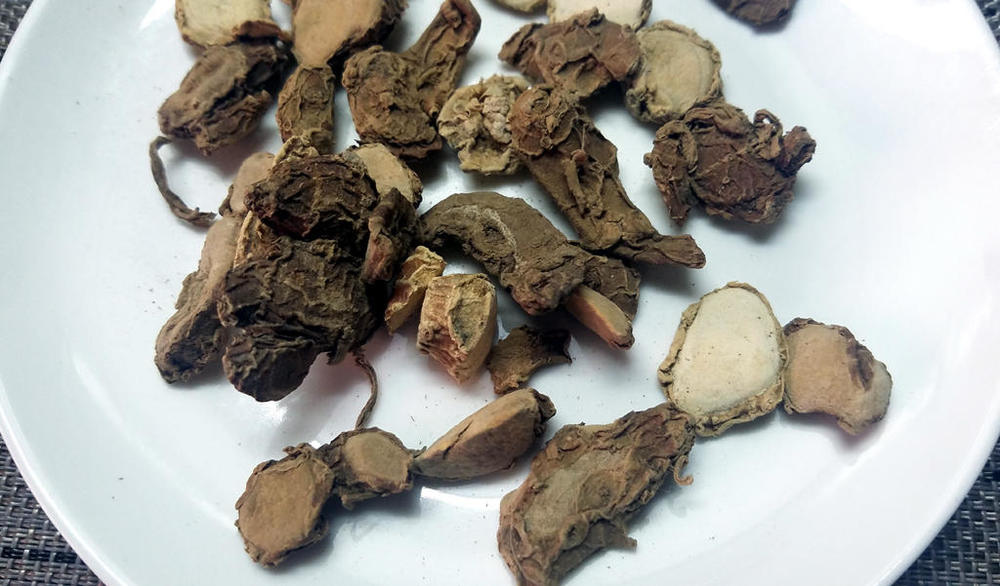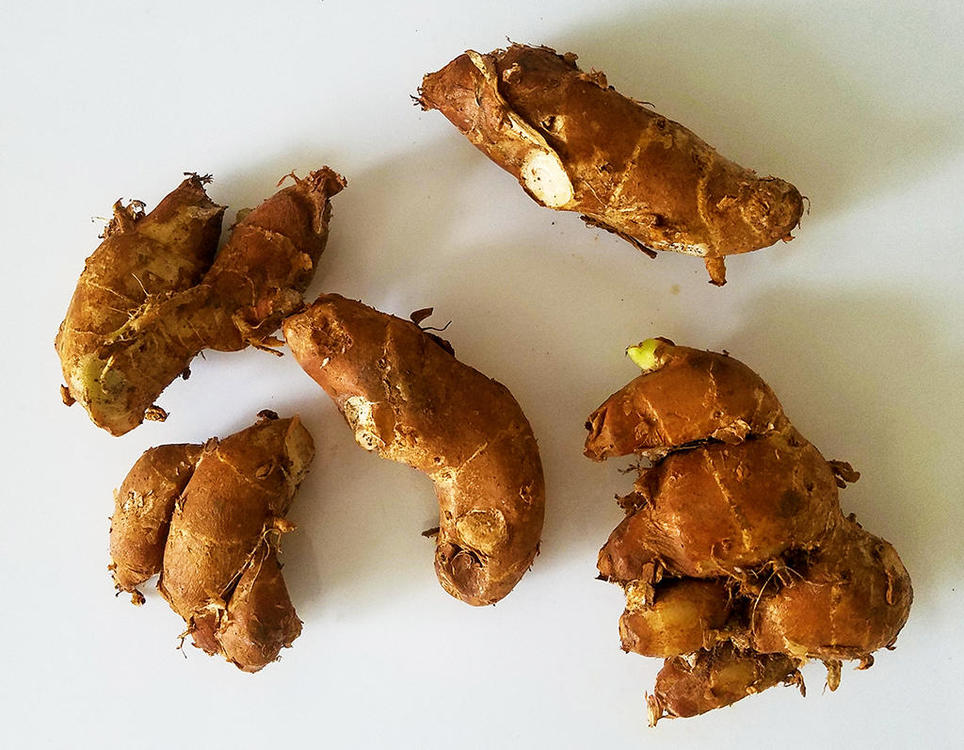Zingiber officinale
It may seem odd to some to include ginger in a list of vegetables. Many people regard it purely as a spice, but it is not only used that way in much of Asian cuisine. And it's a more complicated subject than might appear.
It is, of course, the rhizome of a plant, which qualifies it as a vegetable in my book.
Every supermarket carries three main kinds. The generic term for ginger in Chinese is 生姜/生薑 (Mand: shēng jiāng; Cant: saang1 goeng1) or just 姜 (Mand: jiāng; Cant: goeng1).
First we get what I suppose you might call regular ginger, usually called just 姜/薑 (Mand: jiāng; Cant: goeng1) or, if you must specify, then 黄肉姜/黄肉薑 (Mand: huáng ròu jiāng; Cant: wong4 juk6 goeng1), meaning 'yellow flesh ginger'. This is an all purpose ginger.
Then we have 子姜/子薑 (Mand: zi jiāng; Cant: zi2 goeng1), or 'young ginger'. This is thin-skinned, often with purplish colouring, especially at the tips. It has a more herbal flavour than the others and is often used lightly pickled. This is what you are served in Japanese restaurants as a mouth cleanser, but is also used in China the same way. When used in stir fries, it is seldom peeled.
Pickled Young Ginger
Then 老姜/老薑 (Mand: lǎo jiāng; Cant: lou5 goeng1) or 'old ginger'. This is gnarly, drier and has a spicier taste. Difficult to peel, this is often used in soups, stocks and hot pots where the flavour of less spicy types would be likely to be diluted out of existence.
In addition to these , we also find what is called 沙姜/沙薑 (Mand: shā jiāng; Cant: saa1goeng1). Despite its common English name, 'sand ginger', this is not a true ginger, but a type of galangal, Kaempferia galanga. It is also known as 'lesser galangal or 'kencur'. It was usually only ever seen sliced and dried to be used in hot pot stocks, but in recent years turns up fresh.
Dried Sand Ginger. The whitish slices are about the size of my finger nails.
Fresh Sand Ginger
Note: Despite claims on some websites, ground ginger is NOT used in Chinese cuisine. The only places I can buy it is in specialist bakery goods stores, There has been a bit of a minor fashion for western style cake baking just recently., but few families have ovens, still.








